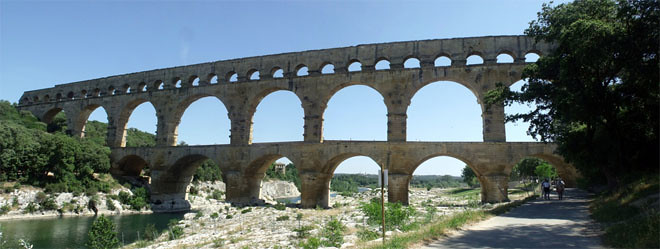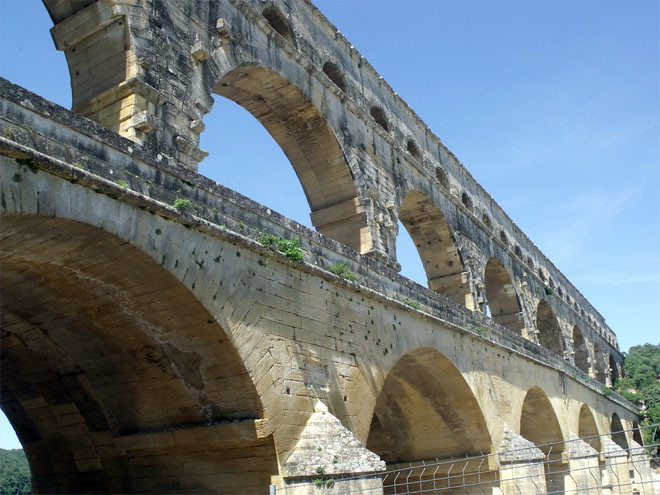
The Pont du Gard Roman aqueduct bridge spans 275m and rises 49m above the Gard River near Nimes, France. It carries 44 million gallons of water each day. Three tiers of arches support the massive aqueduct, with the first tier serving as a road bridge. The toll collected from this bridge over the years motivated local rulers to keep the bridge in good repair, leaving us with a pristine model of Roman ingenuity.
Advanced engineering is evident in the structure. The mass is thin at the top of the arch, just the right amount of material, and larger pieces of limestone protect moments of greatest stress, at the base where the arch meets the column. This reveals a sophisticated understanding of stress and moment forces. The stacking technique reveals calculus in the concept, which architects seek to utilize today.
The entire aqueduct lowers only 2.5 cm per 456m, or a gradient of 1 in 18,241. It is somewhat of a mystery how it was constructed, as each stone had to be crafted precisely before being placed, and no mortar was used. But it is assumed that workers used the same tools and methods as medieval builders of the cathedrals. It was built some time in the 1st century AD.
More Info and Images , More Info , Video


(ell brown– flickr/creative commons license)

(ell brown– flickr/creative commons license)

(Andy Hay– flickr/creative commons license)

(ell brown– flickr/creative commons license)

(lo.tangelini– flickr/creative commons license)
